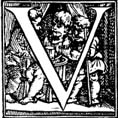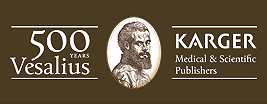
esalius’ Fabrica is one of several landmark works of early European science that appeared around and soon after the middle of the 16th century. These new books transformed Europeans’ knowledge of themselves, the world, and the cosmos around them. Typically, they made a visual argument through woodcut or copperplate illustrations as a key to the knowledge they transmitted.
By Daniel H. Garrison
Vesalius’ friend Gemma Frisius (1508–1555) produced a 1529 revision of Apianus’ Cosmographia which was a great commercial success, followed by a combined terrestrial and celestial globe in 1536–1537 that purchasers could cut out and construct for themselves. The interest in cartography that he stimulated led Frisius’ student Gerardus Mercator (1512–1594) to produce the cylindrical world projection (1569) that is still in standard use. Another Flemish cartographer, Abraham Ortelius (1527–1598), created the first modern world atlas, Theatrum orbis terrarum, in 1570, replacing the obsolete maps of Ptolemy as Vesalius and his successors at Padua were gradually replacing the obsolete anatomy of Galen.
Copernicus’ De revolutionibus orbium coelestium, published the same year (1543) as Vesalius’ Fabrica, replaced the geocentric cosmography of Ptolemy with a heliocentric model that would displace Catholic dogma even as the Reformation displaced its authority in large tracts of Europe. Sebastian Münster’s Cosmographia (1544) appeared in 640 folio pages with 520 woodcuts and 24 double-page maps. Described today as “one of the most ambitious scientific publications of its age” (A. Pettegree, The Book in the Renaissance, Yale University Press, 2010, p. 290), it was reprinted in 1545, 1546, and 1548, followed by an expanded 1550 edition with 1,233 pages, 910 woodcuts, and 54 new maps. Going through 24 editions in 100 years, it was a huge popular success, not least due to its many woodcut illustrations.
Plants and animals received their own comprehensive study and illustration. Leonhard Fuchs’ De historia stirpium (1542) was illustrated with 500 woodcut illustrations of plants. This and subsequent botanical guides supplemented Dioscorides’ 1st-century De materia medica by adding new species from the Near East and the New World. Conrad Gesner issued his Historiae animalium in four volumes (1551–1558) with c. 1,200 illustrations, including Albrecht Dürer’s famous rhinoceros. At the same time, Guillaume Rondelet (1507–1566) published his Libri de piscibus marinis (1554/1555), a survey of the species of fish illustrated with 400 woodcuts.
It is no coincidence that, in addition to Vesalius, five of the eight authors just mentioned were either practicing physicians or professors of medicine. Medicine and its disciplines lay close to the heart of European intellectual and professional life in the 16th century, and its most successful researchers would have shared a strong interest in Vesalius’ atlas of the human body.
These authors are also not isolated examples of the enterprise they represent. Vesalius was one of a class of investigators driven by a common ambition to describe and picture nature in new ways. The scope of their coverage could not have been anticipated by ancient authorities such as Aristotle, Theophrastus, Ptolemy, Dioscorides, or Galen. Prominent in the Early Modern project was a shift in emphasis. Europe’s classical heritage had been knowledge based upon assertion, argument, and (sometimes) description. Early modern writers relied more upon observation, typically with a strong visual argument and a hands-on method of investigation and instruction. Their knowledge was not merely written down: it was made, pictured, and systematically compiled on a scale never before imagined.
Like others of his time who made maps, atlases, cosmographies, and illustrated compilations, Vesalius was well aware of the promise of printing and illustration that could be sold on a large scale to a public with a bottomless appetite for books of knowledge. That is why he took the trouble to transport his woodblocks and manuscript over the St. Gotthard Pass to Basel where it could be produced by one of Europe’s leading publishers, Johannes Oporinus, and marketed in Germany, which is still per capita the world’s largest consumer of books.
It is therefore important to see Vesalius not as a lonely eminence in the mental landscape of 16th-century Europe, but as a representative member of a group who took science into their own hands and made it serve a new demand.
